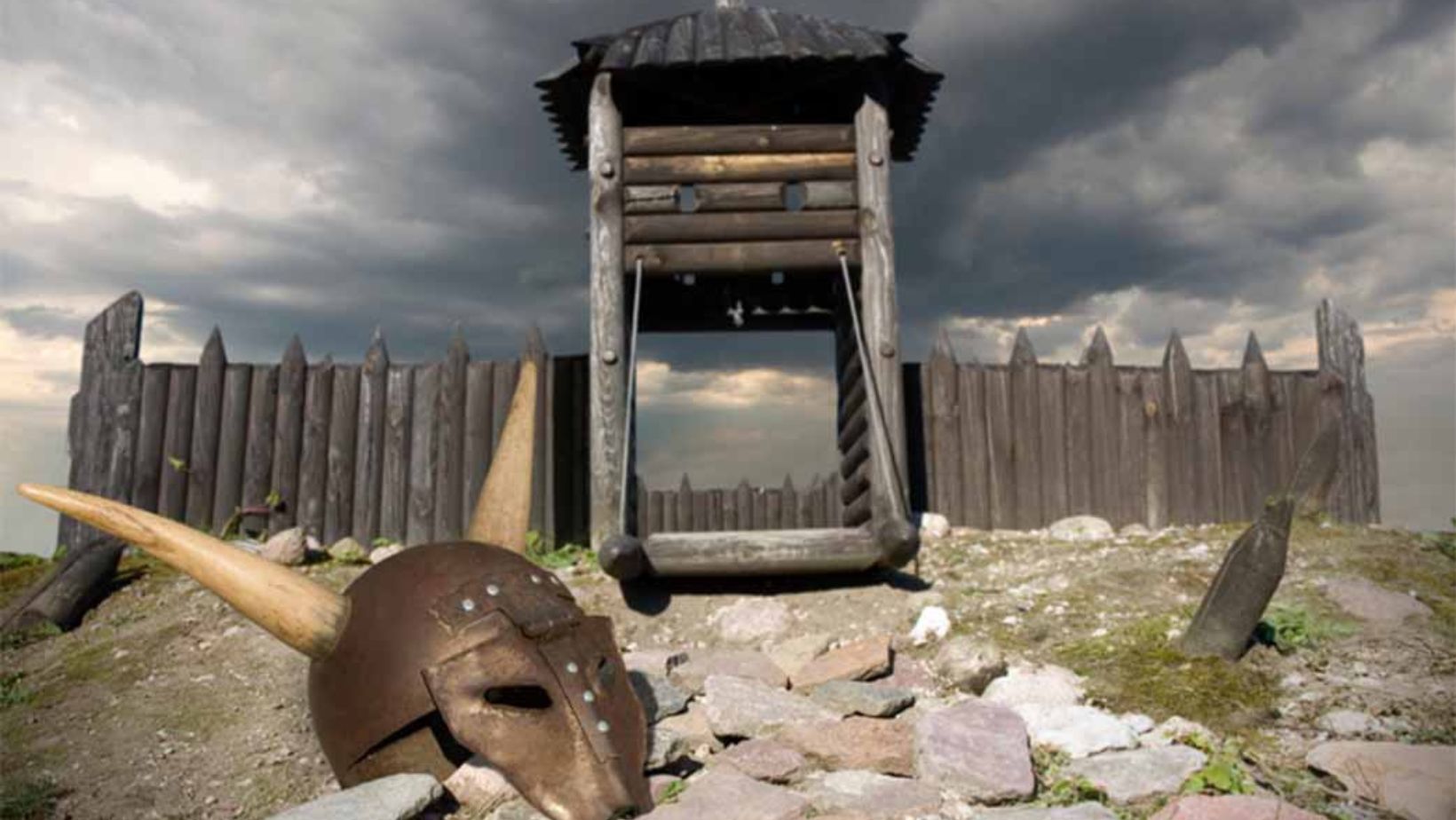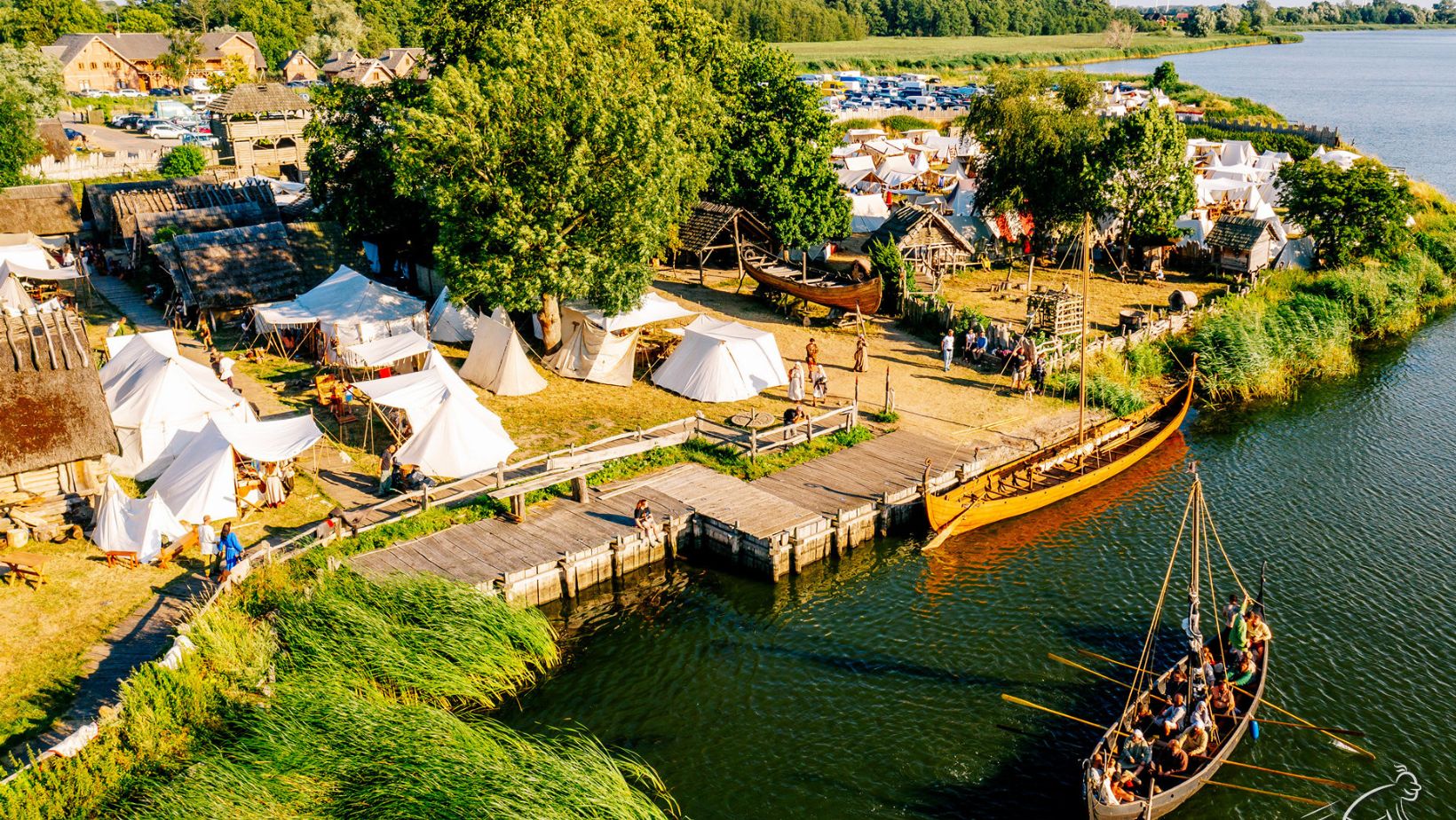Welcome to the world of Jomsborg, a legendary Viking stronghold that sparks the imagination! Nestled somewhere along the Baltic Sea, Jomsborg is shrouded in mystery and myth. Tales of fierce warriors, the Jomsvikings, and their daring exploits fill the pages of Norse sagas. This fortress was more than just a military base; it was a symbol of Viking might and unity. Stories of its daring battles and secretive rituals continue to captivate historians and enthusiasts alike. Join us as we uncover the fascinating history and legendary tales surrounding this iconic stronghold!
Historical Background of Jomsborg

The Viking Age, spanning from the late 8th to the early 11th century, was a time of exploration, trade, and conquest. Vikings traveled across Europe, establishing settlements and raiding coastal towns. During this dynamic era, Jomsborg emerged as a legendary stronghold. It was believed to be a base for the elite Jomsvikings, known for their bravery and martial skills.
Key historical texts, such as the Saga of the Jomsvikings and the Saga of Harald Hardrada, provide insights into Jomsborg’s significance. These sagas recount tales of fierce battles and the strong bond among the Jomsvikings. The Saga of the Jomsvikings describes the stronghold as a hub for warriors, emphasizing its strategic importance in Viking society.
Historians believe that Jomsborg played a crucial role in the political and military landscape of the time. It served as a gathering place for Viking leaders, influencing alliances and warfare. This legendary fortress is not just a relic of the past; it symbolizes the enduring legacy of the Viking spirit and their quest for glory.
Location and Geography of Jomsborg
The exact location of Jomsborg remains a topic of debate among historians and archaeologists. Most theories suggest it was situated along the southern shores of the Baltic Sea, possibly in present-day Poland or Denmark. Some researchers argue for locations near the island of Wolin, while others propose sites in northern Germany. Regardless of its precise location, Jomsborg was strategically positioned for both trade and military defense.
The stronghold’s location was vital for Viking trade routes. It allowed easy access to the lucrative markets of Eastern Europe and the Baltic region. This position facilitated commerce in goods like furs, amber, and slaves. Additionally, Jomsborg’s coastal site provided a natural defense against enemy attacks, with the sea acting as a protective barrier.
Its proximity to shipping lanes also made it a perfect staging ground for raids. The Jomsvikings could quickly launch expeditions against coastal settlements or defend their territory from rival factions. In essence, the geography of Jomsborg was integral to its success, blending trade opportunities with a fortified position in the Viking world.
Legends and Myths of Jomsborg
Jomsborg is steeped in legends and myths that capture the imagination. According to tales, the stronghold was founded by the legendary Viking chieftain Palnatoke. He established it as a base for the elite Jomsvikings, a brotherhood of warriors who upheld strict codes of honor and bravery. These myths paint Jomsborg as a place where valor and loyalty reigned supreme.
One prominent myth features the fierce battles fought by the Jomsvikings, showcasing their combat skills and strategic prowess. The Saga of the Jomsvikings narrates tales of heroic deeds, emphasizing the brotherhood’s unity and strength. Legends suggest that only the bravest warriors could join their ranks, adding an air of mystique to their legacy.
Jomsborg also holds a significant place in Norse mythology. It is often depicted as a realm where gods and mortals interacted, reflecting the Vikings’ deep spiritual beliefs. The stronghold symbolizes the values of courage and camaraderie, which were essential to Viking culture. These legends continue to resonate, making Jomsborg a lasting icon of Viking heritage and lore.
Archaeological Discoveries of Jomsborg

Recent archaeological discoveries have shed light on the legendary stronghold of Jomsborg. Excavations in areas thought to be Jomsborg’s location, particularly near Wolin in Poland, have revealed intriguing evidence. Researchers have uncovered remnants of fortifications, including earthworks and wooden structures, that suggest a fortified settlement. These findings support historical accounts of Jomsborg as a military stronghold.
In addition to structural remains, archaeologists have discovered key artifacts linked to Viking culture. Items such as weaponry, coins, and personal belongings have been unearthed, providing insight into the daily lives of the Jomsvikings. Notably, several beautifully crafted brooches and jewelry pieces highlight the artistry and craftsmanship of the time.
These artifacts not only validate the existence of a significant Viking site but also enhance our understanding of trade and cultural exchanges. They indicate that Jomsborg was not just a military outpost but also a vibrant community. As excavations continue, each discovery brings us closer to unraveling the mysteries surrounding Jomsborg and its place in Viking history.
Historical Accounts
The primary sources that describe Jomsborg, particularly the Saga of the Jomsvikings, are crucial for understanding its historical significance. This saga narrates the legendary tales of the Jomsvikings, detailing their fierce battles and moral codes. It portrays Jomsborg as a fortified stronghold and a center for elite warriors. However, the saga, like many medieval texts, blends history with myth, making it challenging to separate fact from fiction.
While the Saga of the Jomsvikings provides rich narrative detail, its reliability is debated among historians. The saga was written centuries after the events it describes, influenced by the cultural context of its time. As a result, some scholars caution against taking its accounts at face value. Nonetheless, it serves as a valuable reflection of Viking ideals and societal values.
These historical accounts have significant implications for understanding Viking culture. They highlight the importance of honor, bravery, and loyalty within Viking society. Despite their embellishments, these sagas provide insight into how the Vikings viewed themselves and their history, helping to shape the legendary image of Jomsborg as a symbol of Viking strength and unity.
Military Significance
Jomsborg played a crucial role as a military stronghold in Viking warfare. It served as a base for the Jomsvikings, an elite group of warriors known for their fierce combat skills and strict code of honor. This stronghold provided a strategic location for planning raids and launching attacks along the Baltic Sea. Its fortifications helped protect the Jomsvikings from rival factions and enemy forces.
The training of the Jomsvikings was rigorous and focused on building discipline and combat prowess. Young warriors underwent intense preparation, mastering various weapons and battle tactics. This training not only honed their skills but also fostered a deep sense of camaraderie among them. The Jomsvikings were expected to embody bravery and loyalty, which contributed to their fearsome reputation on the battlefield.
Their military significance extended beyond just defense. The Jomsvikings often engaged in coordinated raids, striking fear into the hearts of their enemies. Their reputation as elite warriors made Jomsborg a beacon for Viking warriors seeking glory. The stronghold symbolized not just a place of refuge, but also a hub of Viking military power and strategic influence.
Cultural Impact

Jomsborg significantly influenced Viking culture and identity during the Viking Age. As a stronghold for the elite Jomsvikings, it embodied the ideals of bravery, loyalty, and camaraderie that were central to Viking society. The legends surrounding Jomsborg inspired tales of heroism, shaping the cultural narrative of the Vikings as formidable warriors. This stronghold became a symbol of Viking strength and unity, reinforcing their communal identity.
The legacy of Jomsborg extends beyond its historical context into modern interpretations of Viking history. Today, it serves as a focal point for Viking enthusiasts and scholars alike, sparking interest in their rich cultural heritage. Jomsborg is frequently featured in literature, films, and games, which romanticize the Viking experience and their legendary exploits. This portrayal has helped revive interest in Norse mythology and Viking traditions in contemporary society.
Additionally, Jomsborg has contributed to discussions about the Vikings’ complex social structure, which included elements of democracy and honor among warriors. The tales of the Jomsvikings highlight how shared values and principles shaped Viking culture. Overall, Jomsborg remains a powerful symbol of the Viking legacy, reflecting the enduring fascination with their history and mythology.
Modern Investigations
Ongoing research and exploration efforts at suspected sites of Jomsborg are uncovering more about this legendary stronghold. Archaeologists have focused their work mainly in areas near Wolin Island in Poland and parts of northern Germany. Excavations have revealed potential fortifications, artifacts, and remnants that align with descriptions from historical texts. These discoveries are providing valuable insights into Viking life and military practices.
Historians and archaeologists involved in these investigations are excited about the findings. Many emphasize the importance of combining archaeological evidence with historical accounts, such as the Saga of the Jomsvikings. Dr. Anna Peters, a leading archaeologist, notes that each artifact helps piece together the daily lives and values of the Jomsvikings. Her team is particularly focused on understanding the social structure within Jomsborg and how it influenced Viking culture.
Furthermore, modern technology is playing a crucial role in these investigations. Ground-penetrating radar and LiDAR scanning are being utilized to detect hidden structures and features beneath the surface. As research continues, the hope is to establish a clearer picture of Jomsborg’s significance in Viking history, enriching our understanding of this fascinating era.
Conclusion: Jomsborg
His story as a symbol of military strength, cultural identity, and legendary valor. Its mysterious existence continues to captivate researchers and enthusiasts alike, as ongoing investigations unveil new insights into the lives of the Jomsvikings. The stronghold’s tales of heroism and camaraderie resonate deeply within the Viking narrative, reminding us of their enduring legacy. We encourage readers to explore this fascinating heritage further, as the stories and values of the Vikings continue to inspire and intrigue us in our modern world. Discovering Jomsborg is just one step in understanding the rich tapestry of Viking history.
FAQs
What was the purpose of Jomsborg?
Jomsborg served as a military stronghold for the elite Jomsvikings, providing a base for planning raids and conducting warfare. It was a strategic location that facilitated trade while also offering protection against rival factions.
How did the Jomsvikings differ from other Viking warriors?
The Jomsvikings were known for their strict code of honor and camaraderie. Unlike regular Viking warriors, they operated under specific rules and expectations, emphasizing loyalty and bravery, which contributed to their legendary status.
What challenges do historians face in locating Jomsborg?
Historians face several challenges, including the lack of definitive archaeological evidence and the blending of myth with history in sagas. Many locations have been proposed, but ongoing research is needed to confirm any specific site as Jomsborg.
Are there any known rivalries involving the Jomsvikings?
Yes, the Jomsvikings were involved in various conflicts with other Viking factions and local rulers. Their reputation for fierce combat made them both respected and feared, often leading to alliances as well as rivalries.
How can I learn more about Viking history and culture?
There are numerous resources available, including books, documentaries, and online courses focused on Viking history. Visiting museums that feature Viking artifacts and exhibits can also provide deeper insights into their culture and legacy.

